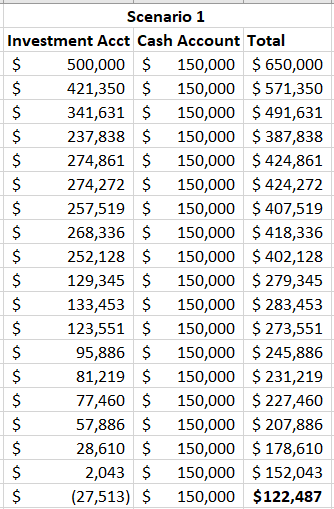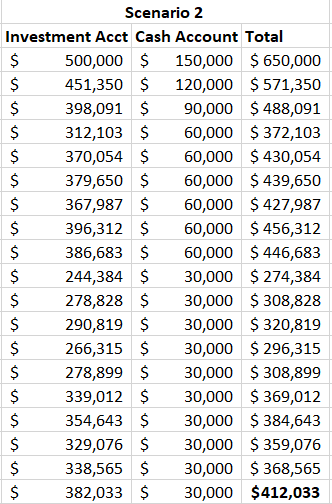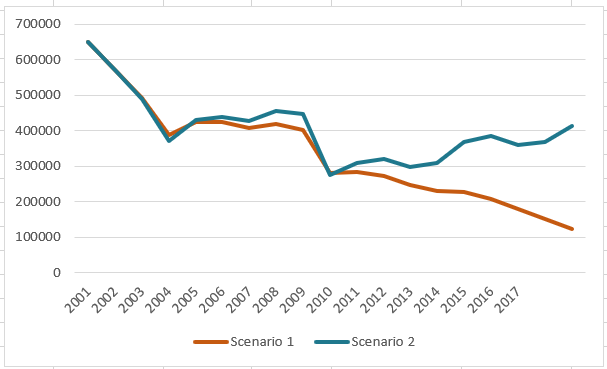One of the first questions you should ask yourself as an investor in retirement is; how much money will I need to withdraw from my retirement accounts over the next 5 years? Whether your investment account is a typical taxable account, an IRA ,or a combination of accounts, if there is market risk attached to those assets you should ask yourself what your 5 year liquidity needs will be.
Managing risk is not limited to how fast your portfolio goes up and down. Risk is dynamic, difficult to measure and often misunderstood. In retirement it’s important to consider sequence of return risk. Sequence risk is the risk of lower average long-term returns because of taking withdrawals during negative return years.
Risk of total loss in a portfolio increases significantly when withdraws are being made during loss years. The best explanation for this is an illustration of competing scenarios.
Let’s use the returns of the S&P 500 from 2000 – 2017. Mrs. Retired has $500,000 in an investment account and $150,000 in a cash account. For simplicity, we won’t assume any return in the cash account. Her annual withdrawal requirement is $30,000 a year.
Scenario 1 – Mrs. Retired wants to take $30,000 out of her investment account every year and keep her $150,000 in her cash account. The result from 2000 to 2017 is the following. The right hand column titled “Total” is the ending asset value each year after the market growth and $30,000 withdrawal.
In 2017 Mrs. Retired must start taking money from her cash account because her investment account becomes 0. Her remaining asset base is $122,487 in cash.
Scenario 2 – Mrs. Retired takes $30,000 from her investment account, but only in years it goes up in value. In the years the account goes down she takes the money from her cash account instead of the investment account.
In 2017 Mrs. Retired still has $382,033 in her investment account. She took money from her cash account in 4 different years, leaving her with $30,000 in that account. Her total assets are $412,033.
Scenario 2 resulted in $289,546 more than scenario 1, all because Mrs. Retiree didn’t take withdrawals from her investment account in down years.
The moral of the story is simple, in an an investment account with market exposure the ability to be flexible with withdrawals and only take withdrawals in positive years is crucial. By separating retirement assets into appropriate groups within your financial plan you can minimize sequence of return risk and maximize the power of your retirement assets.
Add tax-free planning to this financial planning approach and Mrs. Retired will be protected from running out of money and protected against risking tax rates.


